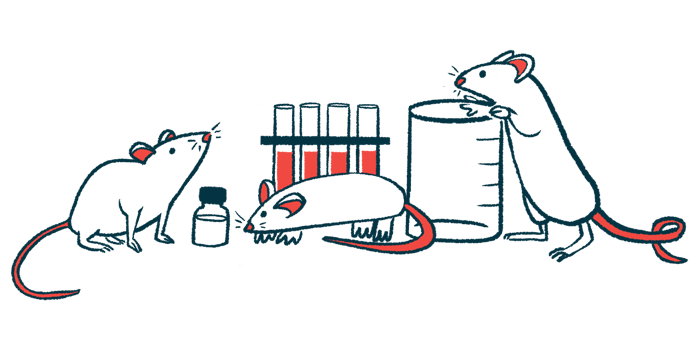Alivexis’ MOD06051 shows promise as AAV therapy in rat model
Oral therapy eased blood vessel inflammation, tissue damage in treated animals
Written by |

Alivexis’ experimental oral therapy MOD06051, designed to suppress an underlying mechanism of ANCA-associated vasculitis (AAV), eased blood vessel inflammation and tissue damage in a rat model of the disease, a study from Japan found.
In lab-grown human and rat cells, the therapy was shown to block the activity of neutrophils, or white blood cells that help the body fight infection. The excessive activation of neutrophils is what drives blood vessel inflammation, or vasculitis, in AAV.
Specifically, MOD06051 works to suppress cathepsin C, known as CatC, an enzyme involved in neutrophil activation.
“These findings suggest that CatC inhibition is a promising strategy to reduce neutrophil activation and improve activated neutrophil-mediated diseases such as [AAV],” the researchers wrote.
The study, “Cathepsin C inhibition reduces neutrophil serine protease activity and improves activated neutrophil-mediated disorders,” was published in the journal Nature Communications.
Blocking cathepsin C could help control excessive immune response in AAV
ANCA-associated vasculitis is characterized by inflammation and damage to small blood vessels, and may lead to symptoms affecting several organs, including the kidneys and lungs. It is most commonly caused by self-reactive antibodies, called ANCAs, that bind to one of two enzymes — myeloperoxidase, known as MPO, or proteinase 3, called PR3 — in neutrophils.
This ultimately overactivates the immune cells, which release neutrophil extracellular traps, or NETs, a type of web that traps and kills microbes. The excessive neutrophil activation and NET formation seen in AAV results in inflammation and damage to neighboring cells lining blood vessels.
Cathepsin C contributes to neutrophil activation through the activation of PR3 and neutrophil elastase, an enzyme produced as part of the immune response.
Here, scientists at Alivexis and research institutions in Japan set out to evaluate the therapeutic potential of MOD06051 in AAV and other diseases marked by excessive neutrophil activation and release of NETs.
The team found that MOD06051 could suppress the activity of cathepsin C, but not of other enzymes in the same family. The therapy also reduced the activity of neutrophil elastase and PR3 in lab-grown neutrophils. These were developed from human blood progenitor cells, or immature cells that can become any type of blood cell.
Further experiments showed that neutrophils derived from healthy rats treated with MOD06051 were less able to form NETs when stimulated with MPO and anti-MPO ANCAs. This confirmed that suppressing cathepsin C effectively reduces NET formation.
Human-derived neutrophils treated with a molecule that suppresses neutrophil elastase also showed a reduced ability to release NETs. This suggests that MOD06051’s ability to block neutrophil elastase activity contributes to the cells’ lowered ability to form NETs.
‘Promising’ results seen in rats treated with AAV therapy candidate
The researchers then determined the efficacy of MOD06051 in a rat model of AAV associated with anti-MPO ANCAs by assessing changes in several disease biomarkers and kidney and lung tissue samples. The model was developed through the administration of human anti-MPO ANCAs to rats.
The team found that rats treated with MOD06051 showed no change in the levels of anti-MPO ANCAs. However, the rats had significantly lower levels of blood in urine, a common sign of AAV, compared with animals that did not receive the therapy.
The results of this study showed that the specific CatC inhibitor MOD06051 could successfully ameliorate MPO-AAV in a rat model.
MOD06051-treated rats also showed significantly fewer bleeding lesions in both the lungs and kidneys, as well as fewer structural abnormalities in the kidneys.
Moreover, the blood levels of NET-forming neutrophils were significantly higher in MPO-AAV rats relative to healthy animals, but were reduced to normal levels with MOD06051 treatment. The percentage of NET-forming neutrophils that infiltrated the kidneys also was significantly reduced in MPO-AAV rats given MOD06051.
These findings suggest that blood levels of NETs may be used “as a biomarker to monitor the disease state of NET-related diseases such as MPO-AAV,” the researchers wrote.
Also, “the results of this study showed that the specific CatC inhibitor MOD06051 could successfully ameliorate MPO-AAV in a rat model,” the team wrote. This further suggests that suppressing cathepsin “is a promising therapeutic strategy for many different kinds of activated neutrophil-mediated disorders, including NET-associated diseases.”




